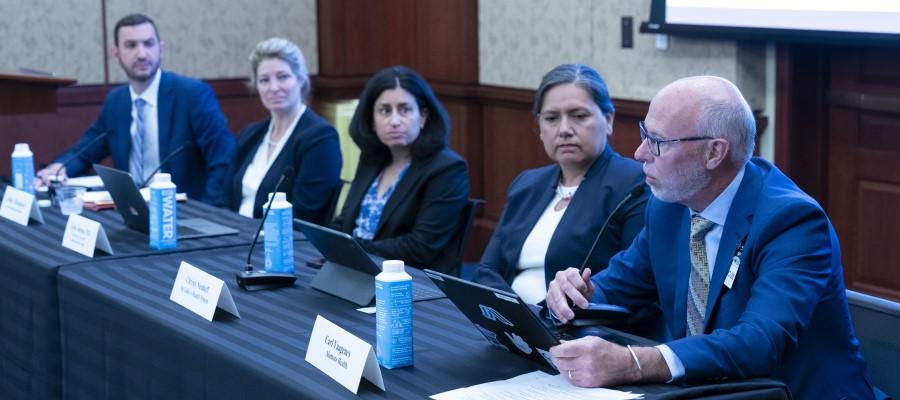At AHA Hill briefing, hospital leaders say site-neutral payment cuts jeopardize access to care for patients and communities

Proposals to reduce Medicare payment rates for hospital outpatient departments by aligning them with payment rates for independent physician offices and ambulatory surgery centers are based on the false assumption that Medicare overpays hospitals for outpatient services, when in fact hospitals receive only 84 cents for every dollar they spend caring for Medicare patients, resulting in a staggering negative 17.5% Medicare outpatient margin, AHA and hospital leaders told congressional and other stakeholders at a Capitol Hill briefing June 26.
Combined with the trend toward sicker patients, longer hospital stays and skyrocketing expenses for labor, drugs, medical supplies and equipment, hospitals face an unsustainable financial environment that additional site-neutral payments would worsen, leaving no choice but to close or curtail services critical to the nation’s health care infrastructure, they said.
Participating in the briefing were Kerin Adelson, M.D., chief quality and value officer for the University of Texas MD Anderson Cancer Center, Houston; Christy Neuhoff, senior vice president and chief legal officer for St. Luke's Health System, Boise, Idaho; and Carl Vaagenes, CEO of Alomere Health, Alexandria, Minn.
“Any cuts would significantly cripple our organization's ability to continue meeting the patients’ needs in our community and region,” said Alomere Health CEO Carl Vaagenes, noting that Medicare and Medicaid already pay the rural hospital 25% and 48% less, respectively, than its actual cost to deliver care. “This year our organization is off to our worst start in my tenure and we are on pace to have close to a $10 million loss in fiscal year 2023 if nothing changes.
New AHA reports related to site-neutral proposals.
In conjunction with the Capitol Hill briefing, AHA released two new resources related to site-neutral proposals.
The first report highlights why additional site-neutral proposals are misguided; how they would have a negative impact on hospitals and health systems’ ability to care for their patients and communities; and the key differences between hospital outpatient departments and other outpatient care settings. The second report highlights that private equity firms, physician medical groups and health insurers account for 90% of physician acquisition deals in the last five years, with the average number of acquired physicians per deal over 10 times higher for health insurers than for any other acquirer type, including hospitals and health systems.

